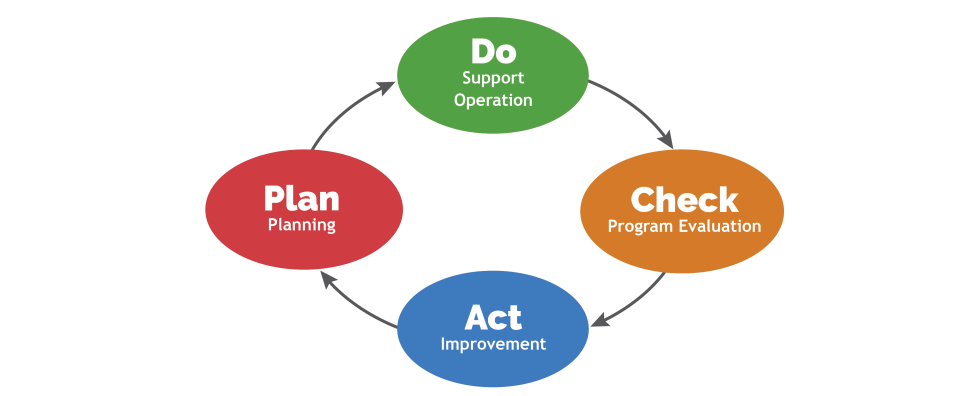Do - Implementing an EMS
The second phase of the PDCA cycle is "Do." During this phase, the organization implements various parts of its EMS. For example, it may implement operational controls to minimize environmental aspects and execute action plans to achieve environmental objectives.

The information below illustrates the next five steps in the EMS "Do" process. These steps apply when establishing an EMS for the first time, as well as when maintaining an existing EMS and striving to continually improve it over time. If the organization has already established an EMS, this phase may only involve determining whether any changes have occurred since initial EMS development and carrying out new plans or procedures.
The planning tasks described in the "Plan" phase should be completed prior to implementing these next steps.
- Step 13: Provide Awareness Training to Employees
- Step 14: Conduct Job-Specific Employee Trainings
- Step 15: Implement Plans to Meet Environmental Objectives
- Step 16: Implement Operational Controls
- Step 17: Implement All Other System-Level Procedures
Step 13: Provide Awareness Training to Employees
Organizations should provide EMS awareness training to employees and consider extending it to others who work on site, such as contractors. The training should:
- Provide an overview of the organization’s environmental policy, its EMS efforts, and any new or modified procedures employees must follow.
- Identify the organization’s environmental objectives, describe progress made in achieving them, and share success stories.
- Help employees understand how their everyday actions impact the organization’s environmental performance and what they can do to positively contribute to the EMS.
The EMS team may wish to include a competency component such as a quiz to ensure that participants are engaged and understand the content of the training. This is especially important for employees who interact with significant environmental aspects. Building a successful EMS is a team effort – organizations that inspire their employees to be responsible environmental stewards will reap the benefits.
Step 14: Provide Specialized Environmental Training to Select Staff
In addition to general EMS awareness training, organizations should provide detailed training to the individuals identified in Step 11 who have a more direct role in implementing operational controls and achieving environmental objectives. These staff members will need training to help them understand: 1) key EMS processes and compliance obligations, 2) environmental aspects and impacts they must address, 3) operational controls related to their specific jobs, and 4) monitoring activities they must perform or oversee. Organizations may find it useful to develop a training matrix to track which employees require training, how often, and when.
Step 15: Implement Plans to Meet Environmental Objectives
Step 9 described the process that organizations should use to establish environmental objectives, develop action plans for achieving them, and identify the individuals responsible for implementing the elements in the plans. During the “Do” phase, those responsible parties should take action to implement the plans and complete the activities outlined within them. If circumstances change, the plans can be adjusted. An EMS is not a strict rulebook – it is a guide to help the organization continually improve.
It may be helpful for the organization to track the status of its environmental objectives as the action plans are implemented. Which steps have been completed? Which ones are still in progress? What resources are needed to move forward?
Step 16: Implement Operational Controls
During this step, the organization should implement the operational controls identified under Step 10 to minimize environmental impacts. They should document which operational controls are in place for each aspect, especially the significant environmental aspects (SEAs).
| Significant Environmental Aspect | Operational Control |
|---|---|
| Paper Use |
|
| Electricity Consumption |
|
| Hazardous Waste Generation |
|
Step 17: Implement All Other System-Level Procedures
During the “Plan” phase, organizations established a variety of system-level EMS procedures related to training, communications, emergencies, documentation, and environmental audits. (See Step 12 for details.) In the “Do” phase, organizations should implement those procedures. For example, they should train staff on the Emergency Action Plan to make sure they know what to do if an emergency occurs. Or, if any actual emergency situations or accidents occur, they should use the plan to respond in an effort to prevent or reduce environmental impacts.
The Emergency Action Plan is just one example of a system-level procedure. Organizations will implement a variety of others during this step as well. They may choose, however, to implement some of them, such as EMS audits and corrective actions, during the “Check” phase.
